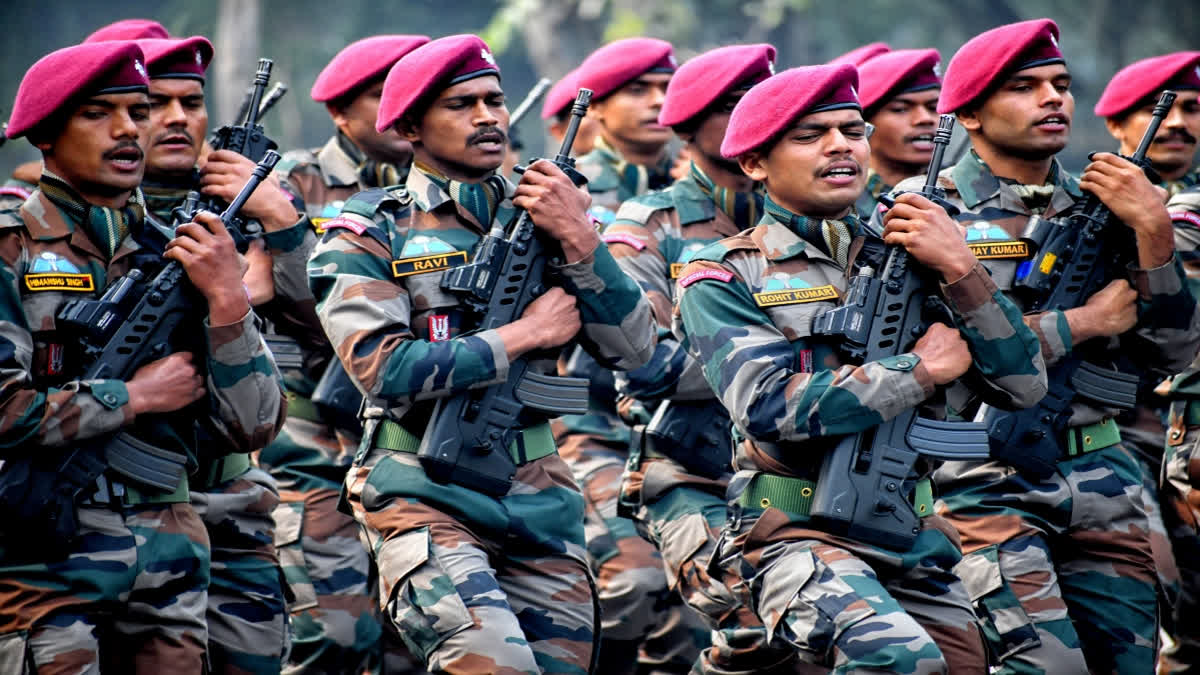Hyderabad: The Indian Army's Ordnance Corps Raising Day is celebrated every year on April 8 to pay tribute to the vital role of the Army Ordnance Corps (AOC) in providing material and logistical support to the Indian Army. With a legacy dating back to the 15th century, the Corps has continuously adapted to meet the evolving needs of the military, embodying the motto "Shastra Se Shakti" (Strength through arms).
Understanding the Ordnance Corps: The AOC serves as a crucial lifeline for the Indian Army, responsible for supplying everything from clothing to weapons, excluding fuel, fodder, and medicines. This encompasses maintenance, repair, and disposal of munitions, as well as specialised training in handling Improvised Explosive Devices(IEDs). The corps stands as a testament to Napoleon's belief that an army’s strength lies not just in its soldiers but also in its arsenal.
Historical Evolution: The roots of the AOC trace back to the formation of the East India Company’s Presidencies in the 15th century. Formal recognition came with the establishment of the 'Board of Ordnance' on April 8, 1775, evolving into the Army Ordnance Department and Corps by 1896. The prefix 'Royal' was adopted in 1918 for meritorious service during World War I, later becoming the 'Indian Army Ordnance Corps' in 1922. In 1950, it was simplified to the 'Army Ordnance Corps', reflecting its enduring commitment to service.
AOC's Contributions: The AOC's contributions extend beyond logistical support, encompassing combat proficiency and innovation. The Battle of KanglaTongbi during World War II exemplifies this, where ordnance personnel displayed remarkable courage and resilience against Japanese forces. Their heroism not only defended strategic positions but also facilitated the safe movement of crucial supplies, underscoring the Corps' dual role as logisticians and soldiers.
Training and Development: Headquartered in Secunderabad, the AOC Centre serves as the training hub for ordnance personnel. Here, individuals undergo military training alongside specialised instruction in repair works and ancillary trades. The emphasis on skill development ensures that AOC members are equipped to handle diverse challenges, ranging from routine maintenance to emergency situations.
Embracing Modernisation: As warfare evolves, so does the AOC. The Corps is undergoing a transformative phase, leveraging information technology and modern inventory management techniques to enhance the efficiency and visibility of inventory. This proactive approach ensures seamless logistics support to the Army, facilitating timely procurement and distribution of essential supplies.
The Battle of KanglaTongbi fought by Ordnance personnel: On the night of April 6–7, 1944, ordnance troops from 221 Advance Ordnance Depot (AOD) engaged in what is regarded as one of the bloodiest fights of World War II: the Battle of KanglaTongbi.
To take control of Imphal and the surrounding areas, Japanese forces had prepared a three-pronged attack. The 33rd Japanese Division trailed the 17th Indian Division at Tiddim (Mynmar) to reach Imphal by establishing a strong presence on the main Kohima – Manipur highway. From there, they advanced towards KanglaTongbi. A small but tenacious detachment of 221 AOD put up a strong fight against the invading Japanese forces here at Kangla-Tongbi.
The Japanese launched a massive attack on the Depot on the evening of April 6–7, 1944, charging downhill into a deep nallah that served as a covered approach to the Depot. The Depot had seen a very well-hidden bunker on this approach.
Upon detecting an enemy section nearby, the Bren Gun Section within this bunker commenced firing. The Japanese were compelled to retreat, leaving many dead, as this alarmed the adversary. Hav/Clerk Store Basant Singh was the one operating the Bren Gun.
As the Indian Army's Ordnance Corps celebrates its Raising Day, it reflects not only on its rich history but also on its ongoing evolution and dedication to duty. From its humble beginnings centuries ago to its current role as a modern and adaptable force, the AOC remains steadfast in its mission to provide unwavering support to the nation's defenders. As the Corps embraces the challenges of tomorrow, it does so with the spirit of "Shastra Se Shakti", drawing strength from its illustrious past and embracing the promise of the future.



